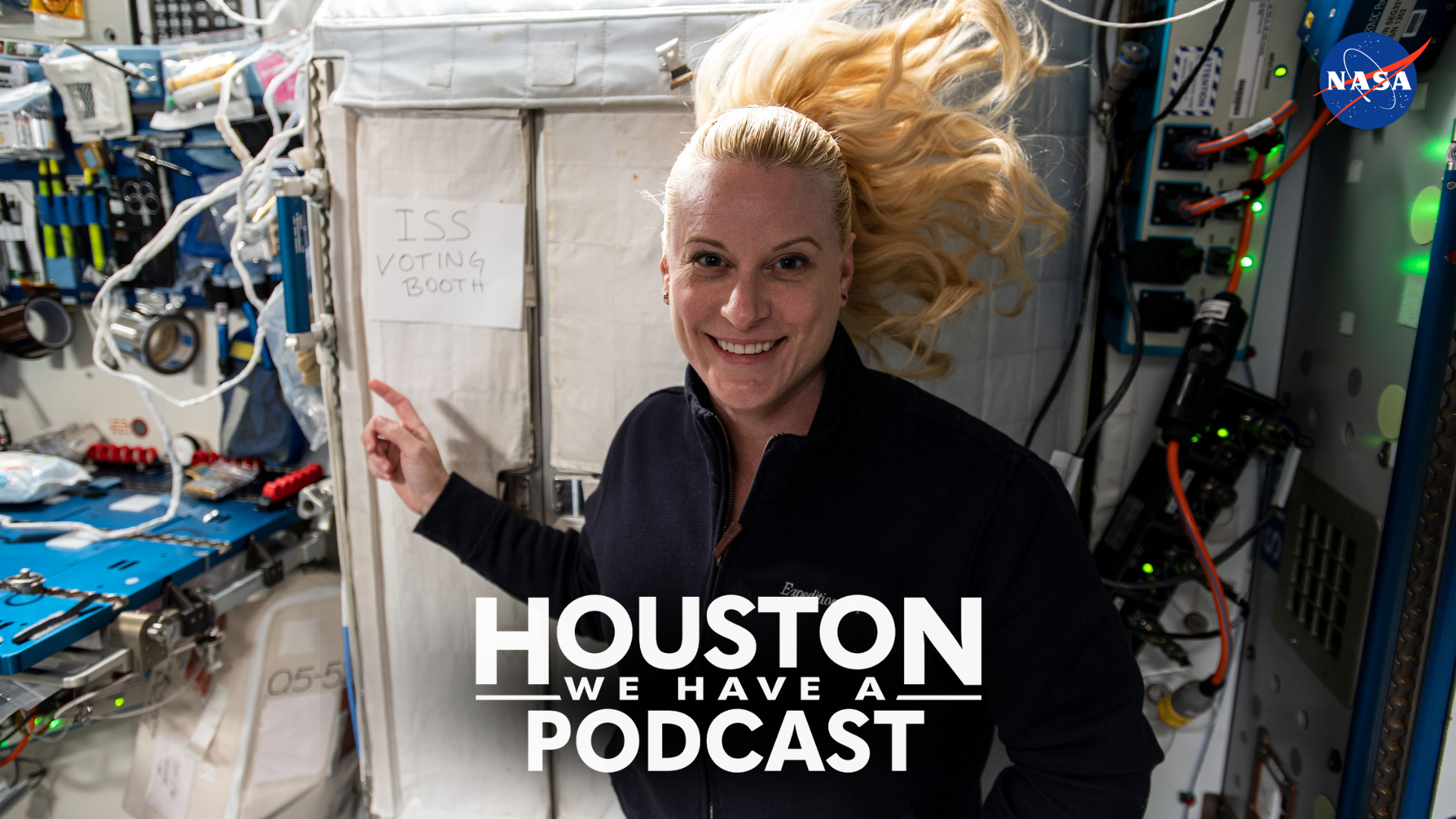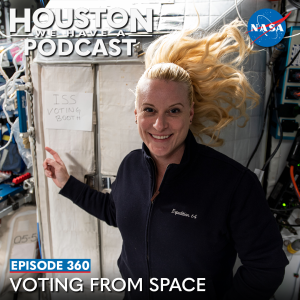
From Earth orbit to the Moon and Mars, explore the world of human spaceflight with NASA each week on the official podcast of the Johnson Space Center in Houston, Texas. Listen to in-depth conversations with the astronauts, scientists and engineers who make it possible.
On episode 360, NASA experts discuss how NASA astronauts have the opportunity to exercise their right to vote from aboard the International Space Station and the process to make it happen. This episode was recorded on Oct. 23, 2024.
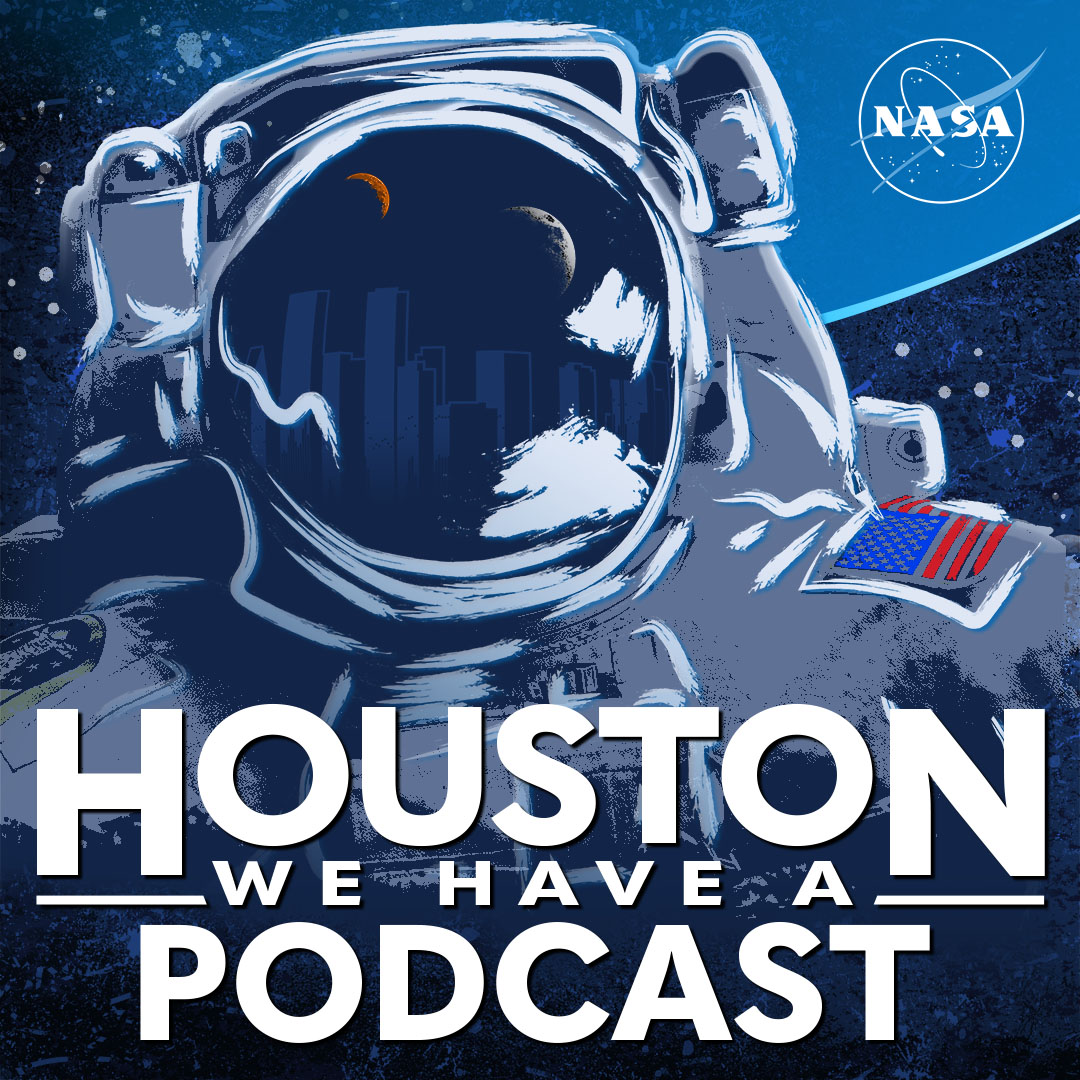
Transcript
Dane Turner: Houston, we have a podcast! Welcome to the official podcast of the NASA Johnson Space Center. I’m Dane Turner, and I’ll be kicking off this episode today. On this podcast, we bring in the experts, scientists, engineers, and astronauts, all to let you know what’s going on in the world of human spaceflight and more. And once again, we are happy to be welcoming another talented individual, lending their voice as a host of this podcast: Joseph Zakrzewski. Joseph, welcome to the podcast!
Joseph Zakrzewski: It’s great to be here. Thank you very much for having me.
Dane Turner: So Joseph, what do you do here at NASA?
Joseph Zakrzewski: Well, thankfully, I work with you and everyone here at the communications office and it’s been a passion of mine to be a part of this team. I joined back in November of 2023 and it’s something I look forward to walking into these hallowed halls every single day.
Dane Turner: That’s awesome. You’re a local here in Houston, what does that mean to you?
Joseph Zakrzewski: It means the world to me. Growing up in Houston and just on the north side of town, to have NASA in my backyard as a kid, I had opportunities to venture out in the world and explore and get to hone passion projects and my professional career and being able to come home and be a part of something that’s been engrained in my family and with me, since day one, essentially, it has been a dream come true. This podcast included. You know, I came on as a fan, and now to be with you and the team has been fantastic so far.
Dane Turner: Well, it is great to have you on the podcast now. Are you ready to get started?
Joseph Zakrzewski: Absolutely, let’s go.
Dane Turner: Alright, take it away.
Host (Joseph Zakrzewski): Houston, we have a podcast! Welcome to the official podcast of the NASA Johnson Space Center, Episode 360, “Voting From Space.” I’m Joseph Zakrzewski and I’ll be your host for this episode. And on this podcast, we bring in the experts, scientists, engineers, and astronauts, all to let you know what’s going on in the world of human spaceflight and more. Voting is a right that every American citizen is able to exercise, whether they’re on Earth or in space. With the upcoming election, we wanted to know: how do astronauts cast their vote when they are hundreds of miles above the planet orbiting on the International Space Station? To answer this, we’re joined today by Marta Durham, Daily Operations Crew Support expedition lead instructor, and Karen Adkins, Operational Psychology Support, who help make this out of this world process possible.
[Music]
Host: Marta, Karen, thank you for joining us.
Marta Durham: Hi, Joseph. Thank you for having us.
Karen Adkins: Yes, thanks for having us.
Host: Well, before we dive in, let’s get the origin story and the background of the departments you work with and how this impacts voting in space. Where did it all begin and where did your journey at NASA start?
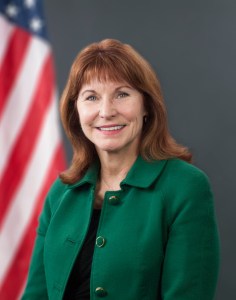
Marta Durham: Okay. I guess I’ll start. I am in the daily operations and crew support group, which is in Flight Operations Directorate. And if I’m meeting you for the first time and you’re not in the FOD and you’re not at NASA, I’ll usually say, when people ask me, what do you do? Well, I help astronauts vote from space just cause that’s got the cool factor, but that’s really less than a 1% of my job. Mostly what I’m doing is teaching astronauts and cosmonauts how to work in space. So how to get to your operations products to find out what you’re going to do every day, what’s you’re tasked to do, and how to find the hardware and the tools and the things that you need in order to do that task and where to put them when you’re finished, how to troubleshoot your laptops and iPads and printers and cargo management, which is a really big deal if you have the knowledge and skills to do those things, you have a smooth day and if you don’t, it can be a rough day.
Host: And Karen, how about you? Where did it all begin for you?
Karen Adkins: In 2000, came across an opportunity to work in the aerospace industry and is what’s currently known as KBR’s Human Health and Performance contract. And it was just as U.S. long-duration missions were just beginning to take shape and the beginning of the International Space Station program. And it was just a very exciting opportunity to join the team. And so I work with the operational psychology team in Behavioral Health and Performance, and we do morale-based support for long-duration astronauts. And we basically work to keep them connected to people and activities that they find meaningful here on Earth.
Host: And the two of you must work together when it comes to the technical side and the human element of the human spaceflight, how do the departments work, especially when it comes to, you know, beginning a process like voting in space?
Marta Durham: It starts with Karen really.
Karen Adkins: Yeah, so we basically start meeting with the crew member about two years out from their launch date to begin the discussion and the process. And that’s when we start developing what we call their in-flight support resource plan. We go over a lot of things like their communication with their family crew care packages, what we call a crew personal webpage, which provides TV, movies, music, podcast, and things for them, which Marta’s group also assist us with. But yeah, so we just kind of kick off that communication, identify their county of residents if they would like to vote and explain the process, just kind of a general overview of the process. And then get them to sign their absentee ballot form request and submit that. And then Marta kind of takes over from there.
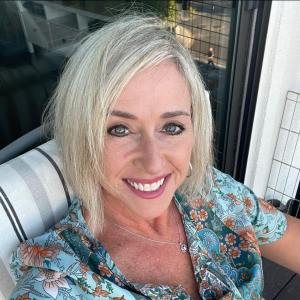
Marta Durham: Yeah, I’d forgotten about that piece. With the crew support webpage, that’s also a DOCS operation where we have people in the group that will digitize and get permissions for any of the things that crew want to be able to use in their personal time, listening to podcasts, being able to view special television shows that they like and those kinds of things. So yeah, we work hand in hand with BHP for that for the crew. So once I get an email from Karen that a crew member has decided they would like to vote from space, and either I can forward the form that needs to be signed, because believe it or not, every county has a different form, even though it’s the same Federal Post Card Application, FPCA. So it’s one of the only times you’ll see postcard is two words. It’s got a long history. It’s an old form, but it is a federal form, but every county kind of has tweaked it specific to their use. So you do have to know what county the voter resides in in order to send the correct form. So that form comes back to me and then I send it on to the county clerk, the voting clerk. So I work really closely with Harris and Galveston County, mostly 99.9% of the time to do that process. So they get the form, they let me know if the forms been accepted. And then we’re really off to the races.
Host: And before we really dive into that process too. And you mentioned, you know, the history of post card and such. Well, voting in space has a history of its own as well. Getting back to, you know, the late ‘90s, we would love to kind of talk about the process of how that’s evolved and how that began for astronauts cause like you mentioned, the process and discussions have to happen, Karen, so early on; and Marta, there’s a lot of steps that have to be done in order to accomplish that. So from when it all began to the late ‘90s to today, how’s that history evolved and, and changed to accommodate the astronauts, accommodate the process and the technology that comes with it?
Marta Durham: There were a lot of moving parts, but it all started, as you say, back in 1996 when astronaut John Blaha was on Mir and he expressed a desire to vote. His residence was in Texas, so it became a state of Texas concern. But the Secretary of State, which manages that part of our election process, couldn’t allow it because there wasn’t a secure way for John to vote from Mir. So the next year in 1997 with NASA’s assistance, a process was designed to secure secret process. So David Wolf in 1997, was the first U.S. astronaut to be able to vote from space, and he voted from the Mir space station.
Host: Wow, that’s impressive. And then how has the process and the forethought gone into communicating with astronauts starting from that time when the astronaut approached the team saying, you know, I know an election’s coming up and I’d love to be a part of it, to now knowing, you know, seeing two years or more out, depending on astronaut schedules, Karen, of how to prepare for moments like this.
Karen Adkins: Right. So I think it was, you know, the Mir was kind of a testing and learning ground for ISS where we learned what crew members needed during long-duration flights and how to best support that. And so I think it’s just important to try to identify things that are meaningful to the crew members and their families ahead of time. And so we can figure out how to implement that and make sure it’s part of the process. And we kind of try to think about the things that sometimes they may not think about because they’re so busy with their training schedule and so rigorous. And so we try to think about all those things for them and get them set up ahead of time.
Host: And we talked about the process of communicating with the astronauts, the steps it takes to vote itself. But when you have a schedule that goes years in advance and the preparing can be years in advance, well schedules can change. And in the case of Butch and Suni, for instance, they’re, you know, now on board an International Space Station and they have the opportunity to vote as well. When changes like that happen, how does the team here on the ground make those accommodations?
Marta Durham: This was a really unique situation. In the past, we’d always been able to accommodate the crew member by getting that FPCA signed in advance. Because by the way, it cannot be digitally signed, it will get kicked back. I am a testimony, I’m a witness to that happening. So it has to be hand signed, which you can understand that’s a requirement, a hard and fast requirement. So we’ve always been able to do that from the ground before the crew member flies. And we’ll start, you know, we try to back it out depending on the launch date. The launch date, the only way that the crew member can be allowed to vote from space if is if they’re not going to be in their residence, their county of residence, for the entire voting period. So, that’s including, you know, the period we’re in now where you can vote up through Election Day. So depending on when they’re launching and when they’re landing, you have to make that case to the voting clerk that they’re not going to be here, similar to a military personnel. They do the same thing. It’s the same process for anybody in the military. But if things change, like has happened in the past, somebody doesn’t launch, launch slips, then there’s a whole other process to cancel your FPCA and there’s deadlines and so yeah, like it can get a little tricky just to stay on top of it.

I mean, I’ve had to make the case for Crew-7 where our crew members were going to be back, but quarantined, like they don’t go, once they land, it’s not like they go straight back to their homes. They have a period where they can’t go to a voting booth. They just can’t. And I had to actually get one of the doctors from our medical staff here to write a letter to make that clear to the voting clerk that yeah, they’ll be here. Similar to like the FPCA, or absentee voting is also allowed for, say if you’re pregnant and you anytime, like three weeks before you’re giving birth or three weeks after you’re giving birth, if that voting period is in there, you can get a mail-in ballot. So that was kind of similar case that we had to make for Crew-7.
So the issue with Butch and Suni being on board the ISS and filling out the FPCA comes down to one thing. And that is, you’re not allowed to have glass in your printer on board the ISS. So it has been deemed by the Safety Organization, NASA Safety Organization, that the glass used in printers for scanning is not safe on board the ISS. So the printers are COTS printers, but the glass is removed. So the problem became how are they going to scan the FPCA, because as I mentioned, it has to be hand signed. It can’t be digitally signed. Well, maybe you know, and maybe you don’t. It’s really easy to use your smartphones now to scan documents. So I knew that, and I know they don’t have smartphones on board ISS, but they have iPads. So I went into our lab and I used the iPads that are exact same iPads that the crew have cause that’s what we used to train crew on. And I tested that out. So I was able to scan the form and use it just like we do with regular scanners. The only thing I was worried about was I wrote up the little steps and we sent them up to Suni and Butch so that they could do it. And it worked fine. What I was worried about was the paper curling in space. Right. We don’t think about that, but you know, if I’m using my smartphone or iPad to scan a document, it’s sitting flat on a table. But in space, that’s not quite the same. But they did it and it worked.
Host: I mean, I imagine it was a pretty unique experience for them to print it out, to sign it, to take a picture of it, send it back down, and then have that interchange. It’s almost like signing, you know, a housing lease or something like that where you get all these copies that you have to hand sign.
Marta Durham: But now we know they can do it.
Host: Yeah.
Karen Adkins: If there’s a will, there’s a way.
Host: Yeah. And another way of the evolving process. It feels like what I’ve taken away from a lot of this conversation is there’s a lot of lessons learned from, you know, the beginnings to now of each situation’s unique, but, you know, if this time ever comes up again or you have to make a similar adjustment that you have that in your playbook to pull from.
Marta Durham: Exactly.
Karen Adkins: Exactly. I think it’s just being flexible and kind of adjusting to what comes and problem solving and figuring out a way to make these things happen.
Marta Durham: And we were working it, we were talking it even before we knew. So the minute that that we had that period where it was the NASA was making the decisions about what Suni and Butch’s mission was going to be, whether they were coming home or staying. We were already starting the discussion of, well, what will we do if they stay? So we were ready the minute we knew the answer.
Host: Wow. It seems like there’s a lot of paperwork and a lot of phone calls and emails that have to be exchanged in order to cancel or reapply or recondition based on a situation that can be a week by week, case by case day by day situation.
Marta Durham: Well, it’s county by county. The way Harris County deals with the cancellation is a specific form. Galveston County, they want to see a letter that you’ve hand signed that the crew members hand signed. So they write a letter of why they need to cancel and then hand sign it, scan it, and send it to Galveston County. So it’s just interesting how every county can be completely autonomous and how they deal with the process
Host: And how, Karen, is the communication between you and the astronaut team and maybe the individual itself, depending on who it impacts to kind of walk them through these stages and have the understanding behind it, cause like you said, it’s a busy schedule. If things change or schedules change, there’s probably a lot going through their mind. So when a process like this that has so many steps, how do those communications happen? And how can you walk a team through it knowing that there’s changes around?
Karen Adkins: Sure. So it basically comes back to communication and building a relationship with that crew member. Being in contact on a regular basis with different deliverables that are associated with their support. But this is a very important one that you want to stay on top of. And Marta does a great job outlining exactly what needs to be done, how it needs to be done, how everything is to be completed so that it’s in line with the county’s guidelines. And so it’s just really a matter of, you know, depending on that relationship that you build and just clear communication and providing them with the details that they need.
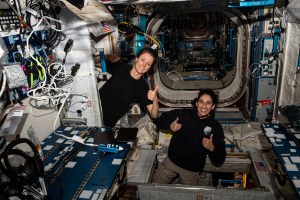
Marta Durham: So what she’s referring to, one of our favorite pieces is of the process is for that FPCA, the Federal Post Card Application, you have to state an address for where you’re going to be during the election period. And for all these years, even when the role was handed over to me, I was given the guidance to tell crew to just write International Space Station or low Earth orbit. We had some new voting clerks in one of our counties that hadn’t been through this process before. So the first time that they got the FPCA, they emailed back to me, can you send this back and get the astronaut to say, to put in here exactly what their address is. And because I really don’t want to bother the astronauts if I don’t have to because they’re so busy. I said, I emailed back in a bit of a huff and said, “Well, you tell me what address do you want Washington, D.C. do you want Johnson Space Center? Because they’re traveling around the Earth every 90 minutes.” I, you know, don’t even think longitude and latitude’s going to help. And so, oh yeah, I was a bit huffy. Because that’s what I tell Karen and the psych support to tell the crew just put International Space Station, low Earth orbit. So the clerks came back and said, “Okay, we looked into it,” and they could see, they have to keep those forms for everybody. So historically, so they could go back and see, oh, this is what the way we’ve always done it, and we’re okay with that now.
Karen Adkins: And that is their home. That is their home for six months to a year, depending on how long they’re up there.
Marta Durham: Yeah. So that was one of our fun ones. Can you give us the address of exactly where the—
[Laughs]
Host: And they probably see so many addresses too, to have that come across their desk after, you know, going through different letters, different forms, and then they say International Space Station, low Earth orbit. I always got a kick of seeing, you know, some of the forms that came back from the Apollo missions of, well, where were you at this time? Well, I was on the Moon. Like, I can only imagine the facial reactions for people that when they open up that letter and see the address of wait, what?
Karen Adkins: Yeah. Right.
Marta Durham: It’s very unusual, you know, it’s a unique thing for them as well.
Host: Well, now that we’ve gone through the process and the preparations, the astronaut is on the International Space Station. It’s an election year. And then of course now we’re getting ready to vote. What is the process and how can that process begin? And how do you walk the astronaut through? Is there a voting booth that they construct? Is there, you know, I guess how does it all begin and how does the process start?
Marta Durham: You know, what I was really missing, Karen, this time around was voting stickers. We need to think about that for future elections, like we need to send up in care package.
Karen Adkins: That is very true. In the care package, voting stickers, I voted.
Marta Durham: My Facebook feed is filled with people with their voting stickers. That’s what made me think about.
Karen Adkins: It’s a great idea. It’s a great idea.
Marta Durham: But we’ve had crew that have sent us pictures of how they’ve used their crew quarters and they’ve put like a little sign on it that they just, you know, put “Voting Booth.” It’s really clever. We love the pictures. The voting clerks love getting pictures of crew voting on board. But, it’s really up to them, however they want to do it. But it’ll start with me working with the county clerk to get a secure PDF-fillable, password-protected ballot. So they’ll send me a sample ballot and I will use our lab, which this is why DOCS has this role. We have a lab where we have the station support computers, just the laptops exactly the same as the ones that crew use on board. We teach the crew, we use those laptops to teach crew. And I’ll use that laptop to test the ballot and see does the password work, and I’ll fill it out and send it back to the clerk so the clerk can open it and see did it work? Do you see a casted ballot? And that’s our verification. Once we’re comfortable that that’s working, and sometimes it takes a few iterations, but generally speaking, we always get it. We’ve always gotten it to work. Then we are able to provide the county clerk, whoever the point of contact is for the county, for the mail-in ballots, we provide that email to MCC Houston so they can add it to the secure, we call it the friends and family secure email list. And that way then, it’s a completely private exchange between the county voting clerk and the crew member. They’ll send two emails, one with the attached PDF ballot, and then another email with just the password, and then the crew vote and they have the email to send their ballot back to the voting clerk. And then by Texas law, cause this is a law in Texas, the voting clerk then prints that PDF, hand fills out a ballot and then keeps all of it together for historical purposes.
Host: Karen, we were just talking, you know, and having some fun about voting stickers. A lot of astronauts see this as a prideful moment from what I’ve read, what I’ve seen. And even Butch and Suni themselves, we were just talking about them and they talked about how it was an honor to be a part of this process. And your conversation with them and talking about morale and especially the timeliness of them and others on station, what have those communications been like from, I guess, a motivational standpoint for them to be a, a beacon of this process and support this process, 250 miles plus above the Earth’s atmosphere?
Karen Adkins: Yeah, I think it’s an important right and duty for every American. And I think, you know, very important to them. And so, you know, I know that they really appreciate all of the assistance and help being able to do the things. Those things that seem easy and here on the ground become a little bit more complicated. And when it’s, you have to, you know, do it through all these systems that are in place. But I know that they really appreciate all of the assistance by NASA and the organization to exercise their duty and a right to vote.
Marta Durham: Dr. Linda Godwin was the person, the first person to help with that process, that secure process. And that was something that she commented on, similar to what Karen just said about how, for somebody who’s living on board the ISS, especially with the long missions we have these days, even doing the small things that we might think about that we can do here on Earth, being able to do those things, just brings another level of comfort of from home.
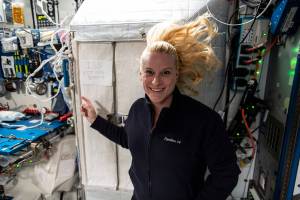
Karen Adkins: Yes, exactly. Yeah. It’s just that to be, you know, it’s very important to feel connected to what’s going on here on Earth and be able to, you know, do what everybody else here is doing, which is it’s an important thing right now for everybody.
Marta Durham: It’s not hard to imagine if we’re up there and we had a presidential election going on and you’re just not able to participate. It would not feel good.
Karen Adkins: Right, exactly.
Host: Well, I love that this is a major moment that can connect all of us, regardless of what our addresses that we put on our postcards. But Marta, you brought up a great point too, and we were talking about it before we started to do that. Not all astronauts are based or have their addresses listed as Texas, so you have to work with other states and their processes as well. How does that happen? I’d imagine when you approach them, if it’s an astronaut from a new state and it’s a new process, maybe they have a few questions to ask. Maybe they’re excited to be a part of something so unique. How does a non-Texas astronaut, in terms of address and process work out in a moment like this?
Marta Durham: It’s usually a military astronaut, and they’re used to using the FPCA and voting from any place around the world. So it’s not that much unusual for them. It’s the clerks in those states that get really excited. They’re actually, the two that I’ve worked with in the past, out of state clerks, have been very gracious and accommodating, even though they don’t have a law like we do in Texas. But they’ve not had any problems, which I think reflects on how secure the system is that NASA has put in place to do this. They have confidence that our system is private and secure. And like I said, we’ve worked very well with them, but they do get excited about it. They’re really happy to be a part of that voting and space process.
Karen Adkins: Yes.
Host: How does it work for other elections? I know we’re talking about this surrounding a presidential election, but there’s primaries, there’s local elections, there’s, you know, smaller campaigns that an astronaut might feel very compelled to want to participate in, especially in their particular neighborhood. How do those communications come to be when, when, you know, certainly the presidential ones grab the most headlines and that’s easiest to put on the radar, but some of those smaller elections, how do those communications happen, Karen?
Karen Adkins: Yeah, kind of the same thing. You know, when we’re going through their inflight support resource plan, we’re touching on voting and, you know, we’re select, even though if it’s not a big national election year, we do check to see if they want to vote in their local elections. And then we follow, and Marta follows the same process, basically. But it’s just kind of on a, we have like a timeline that we go down of deliverables and things that we provide, and it’s just kind of part of that process that we communicate to them.
Marta Durham: I’ve had to get a lot more educated on all the different kinds of elections we have.
Karen Adkins: Yes.
Marta Durham: I was not that tuned in before, but I would say the easiest piece is the FPCA. You do it once per year. So whenever the crew member has filled it out, generally before they launch, except in this newest case, that will cover all the elections for the year in their residence. We did have a situation though, where Crew-7, their mission fell over January of the next year. So we did use a proxy. Now we know we can do it from space next time when we have to get the FPCA filled out. But at the time with Crew-7, we had our psych support people. You can, on the FPCA, you can designate a proxy cause you think about it, if you have somebody who’s disabled or for some reason is not going to be able to fill out the form themselves, the United States has covered that in the FPCA form. So somebody’s designated as a proxy. So that way, then January 1, the psych support person was able to file the new FPCA for our Crew-7 crew members that wanted to vote. But that was a new process, that was a new unique situation too for us. Like, oh, you have to do that I had not experienced before. You have to do the FPCA again. And I kept saying, “But they’re in space.” So we went through that and had a learning curve there.
Karen Adkins: But it’s always interesting. And that’s the fun part of the job, right?
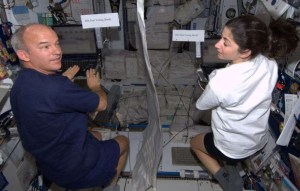
Marta Durham: That was so Crew-7 could vote in the primary cause they were going to be up there for the primary.
Host: Wow. Well now it’s time to vote and the vote is cast. Does the process start early? I know different states, depending on where their addresses are, where they’re located, what they’re doing, have different, you know, early voting start times. Do they wait till Election Day to be, you know, to have the actual vote cast on the day that, you know, everyone in the biggest headlines are being made? Or, you know, is it something that you try and maybe do a little combo the both between, you know, getting it in early versus, you know, waiting till that the big momentous day itself?
Karen Adkins: We start it a couple months out as far as, you know, the process outlining it for them in detail, sending them what they need, and then they usually vote early to make sure that I think that, you know, we’re concerned with making sure that we have time in case anything, there’s any issues or problems, that we have time to work those out. And so typically it is done before actual Election Day.
Marta Durham: Right. They have up until 7:00 p.m. Nov. 5 this year. But yes, we encourage them to do it early, completed early if there’s troubleshooting.
Host: Just in case in case schedules change, things change or schedules happen. Wow, this is incredibly fascinating. And now I’m kind of curious to hear what your thoughts are for the future of this process. We’ve seen how it’s grown from the ‘90s to today, but as missions become longer and goals like the Artemis missions to the Moon become longer and destinations become further out, do you see this process evolving along with that? And if so, what could we expect possibly?
Marta Durham: I’m really excited about that question. I actually have been thinking about that. It’s just been rolling around in my brain, like, what’s going to happen, you know, the next, you know, Artemis II, I work with that crew, too. That’s another one that we’re in training for their mission. And that’s not going to be an issue. But as we get to Gateway and longer duration missions, I don’t see the process changing that much. I mean, it’s possible that we’re going to be using Deep Space Network instead of Near Space Network, but other than that, as long as they can get email, I think it’s going to be just fine.
Karen Adkins: Yeah, I think so too. I think so too.
Host: Marta, Karen, this has been an absolutely fascinating discussion. I cannot thank you enough for joining us on Houston We Have a Podcast today.
Marta Durham: Thank you for having us.
Karen Adkins: Yeah, thanks for having us. It was fun.
[Music]
Host: Thanks for sticking around. We hope you learned something today. And remember, if you live in the U.S., don’t forget to vote. Election Day is Tuesday, Nov. 5. For more information about how astronauts live and vote from space, check out nasa.gov. And if you want more NASA podcasts, you can find all the great shows from across the agency at nasa.gov/podcasts. You can also find Johnson Space Center on social media on Facebook, X, and Instagram. To contact us, use #AskNASA on your favorite platform and make sure to mention it’s for Houston We Have a Podcast.
This episode was recorded on Oct. 23, 2024. Thanks to the Houston We Have a Podcast team, Courtney Beasley, Will Flato, Dane Turner, Abby Graf, Jaden Jennings, and Dominique Crespo. Thanks to Chelsey Ballarte and Jessica Hewlett for connecting us with our guests. And of course, thanks again to Karen Adkins and Marta Durham for coming on to speak with us. Give us a rating and feedback on whatever platform you’re listening to us on and tell us what you think of our podcast. We’ll be back next week.
This is an Official NASA Podcast.



























